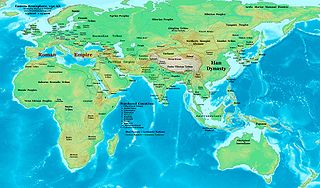
| Millennium |
|---|
| 1st millennium |
| Centuries |
| Decades |
| Years |
| Categories |
The 120s was a decade that ran from January 1, AD 120, to December 31, AD 129.
Contents
During this decade, the Roman Empire was ruled by Emperor Hadrian (r. 117–138). In the prior decade, he had succeeded Emperor Trajan, who had expanded the empire to its greatest extent. Hadrian, in contrast, adopted a more defensive foreign policy, focusing on consolidating the empire's borders and improving its infrastructure, such as Hadrian's Wall in Britain. There was almost a renewed war with Parthia, but the threat was averted when Hadrian succeeded in negotiating a peace in 123 (according to the Historia Augusta , disputed). [1] Furthermore, Hadrian enacted, through the jurist Salvius Julianus, the first attempt to codify Roman law. This was the Perpetual Edict, according to which the legal actions of praetors became fixed statutes and, as such, could no longer be subjected to personal interpretation or change by any magistrate other than the Emperor. [2] [3]
The Chinese Eastern Han Dynasty saw the death of regent Deng Sui in 121, after which Emperor An took on the reins of the imperial administration. In 121, there were again Qiang and Xianbei rebellions, which would continue to plague Emperor An for the rest of his reign. The only border where there were Han accomplishments during Emperor An's reign was on the northwestern front—the Xiyu (modern Xinjiang and former Soviet central Asia)—where Ban Chao's son Ban Yong (班勇) was able to reestablish Han dominance over a number of kingdoms. Emperor An was succeeded by Marquess of Beixiang in 125, who reigned for a short time before being succeeded by Emperor Shun of Han that same year. At the start of Emperor Shun's reign, the people were hopeful that he would reform the political situation from the pervasive corruption under the Yans. However, the teenage emperor proved to be a kind but weak ruler. While he trusted certain honest officials, he also trusted many corrupt eunuchs, who quickly grabbed power.






